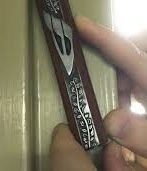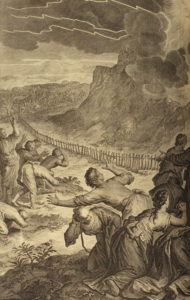Chanukah: the Holiness of the Doorway – the Mezuzah and the Chanukiya
 There is a curious connection between the mezuzah and the lighting of the chanukiya. These two mitzvot are brought together in halakhic, midrashic and mystical material. I would like to present two foundational texts that help prepare us for a new and exciting approach to Chanukah.
There is a curious connection between the mezuzah and the lighting of the chanukiya. These two mitzvot are brought together in halakhic, midrashic and mystical material. I would like to present two foundational texts that help prepare us for a new and exciting approach to Chanukah.
The Bavli
First, the gemara in Shabbat 22a, in describing where exactly to place the Chanukah lights, tells us that there is a mitzvah to place the chanukiya within a tefach (a hand’s breadth) of the doorway1. We then learn this debate:
שבת כ”ב.
וְהֵיכָא מַנַּח לֵיהּ?
רַב אַחָא בְּרֵיהּ דְּרָבָא אָמַר מִיָּמִין
רַב שְׁמוּאֵל מִדִּפְתִּי אָמַר מִשְּׂמֹאל.
Bavli Shabbat 22a
And where [near the doorway] should it be placed?
Rav Acha the son of Rava said, “On the right.”
Rav Shmuel from Difti said, “On the left.” …
 Telling the Story of the Jewish People
Telling the Story of the Jewish People